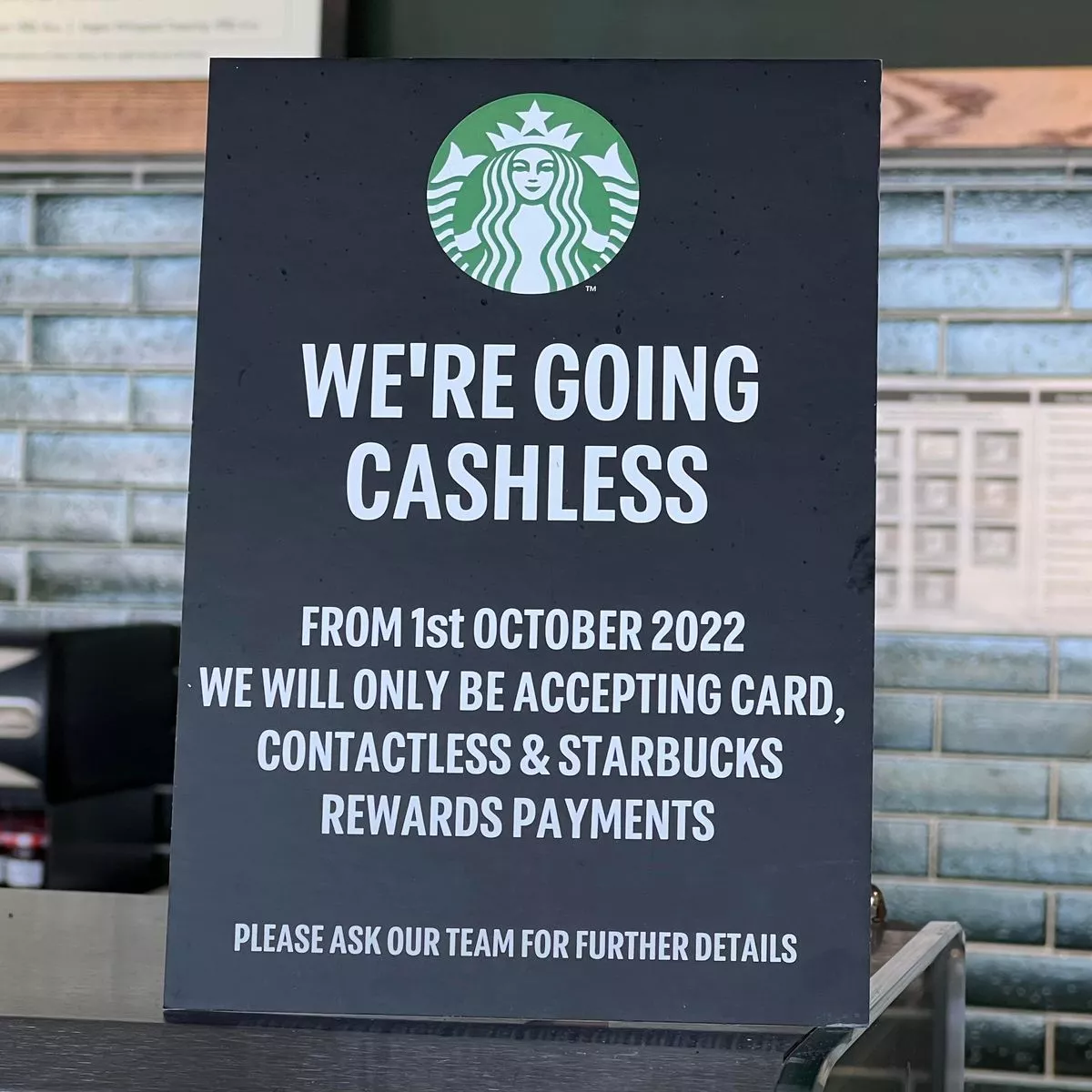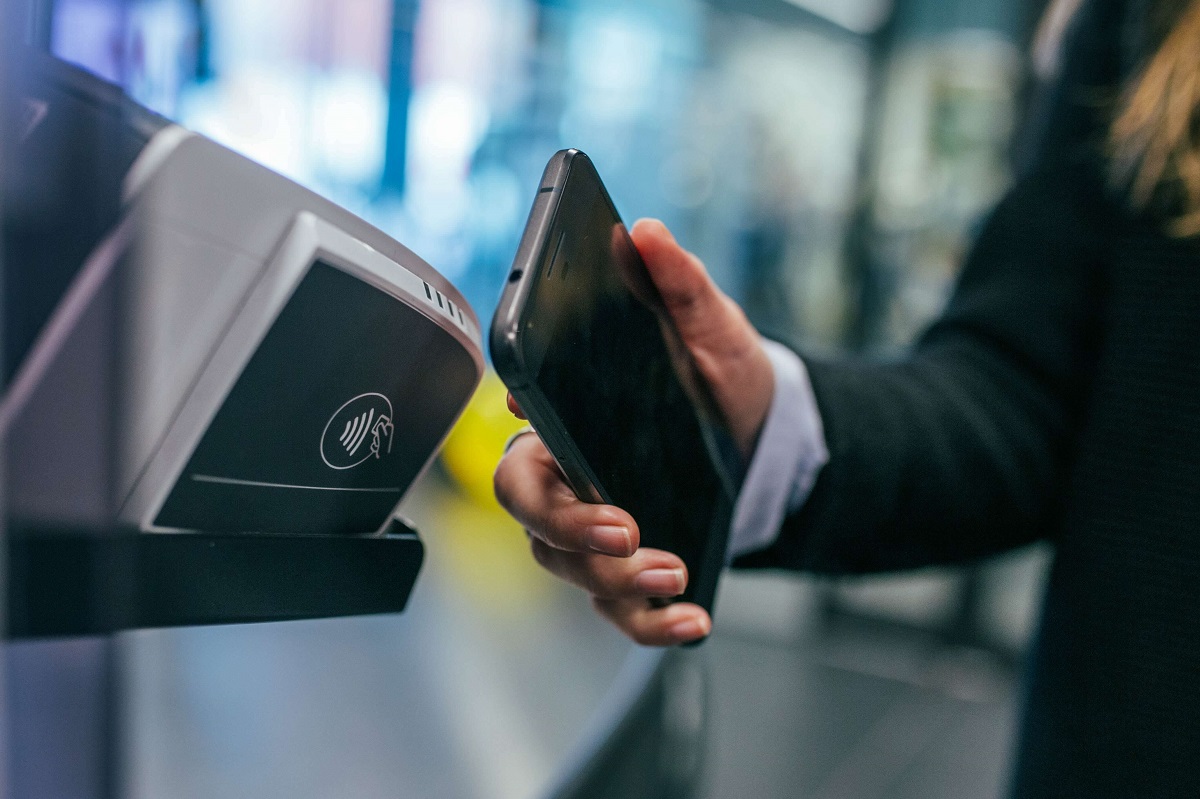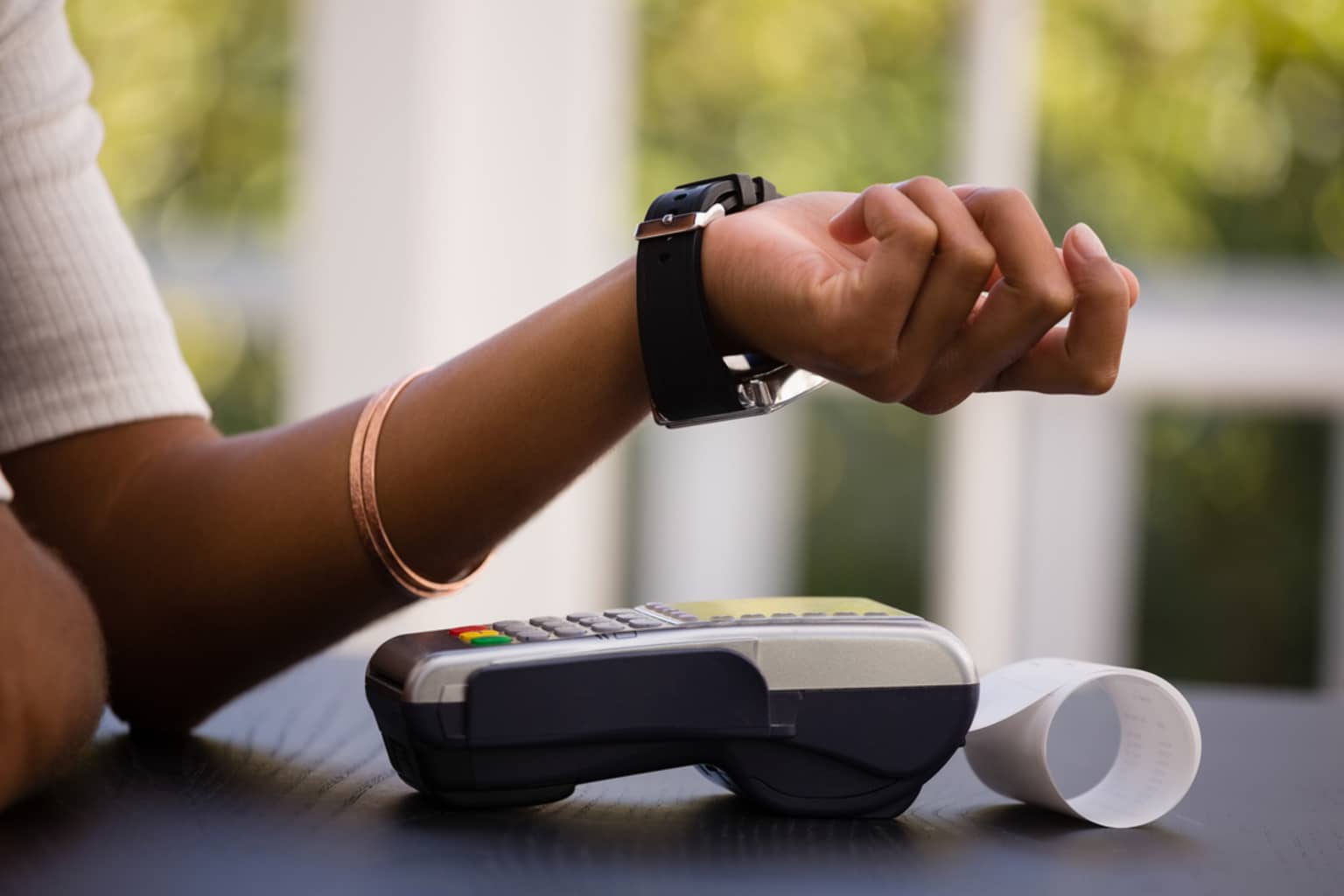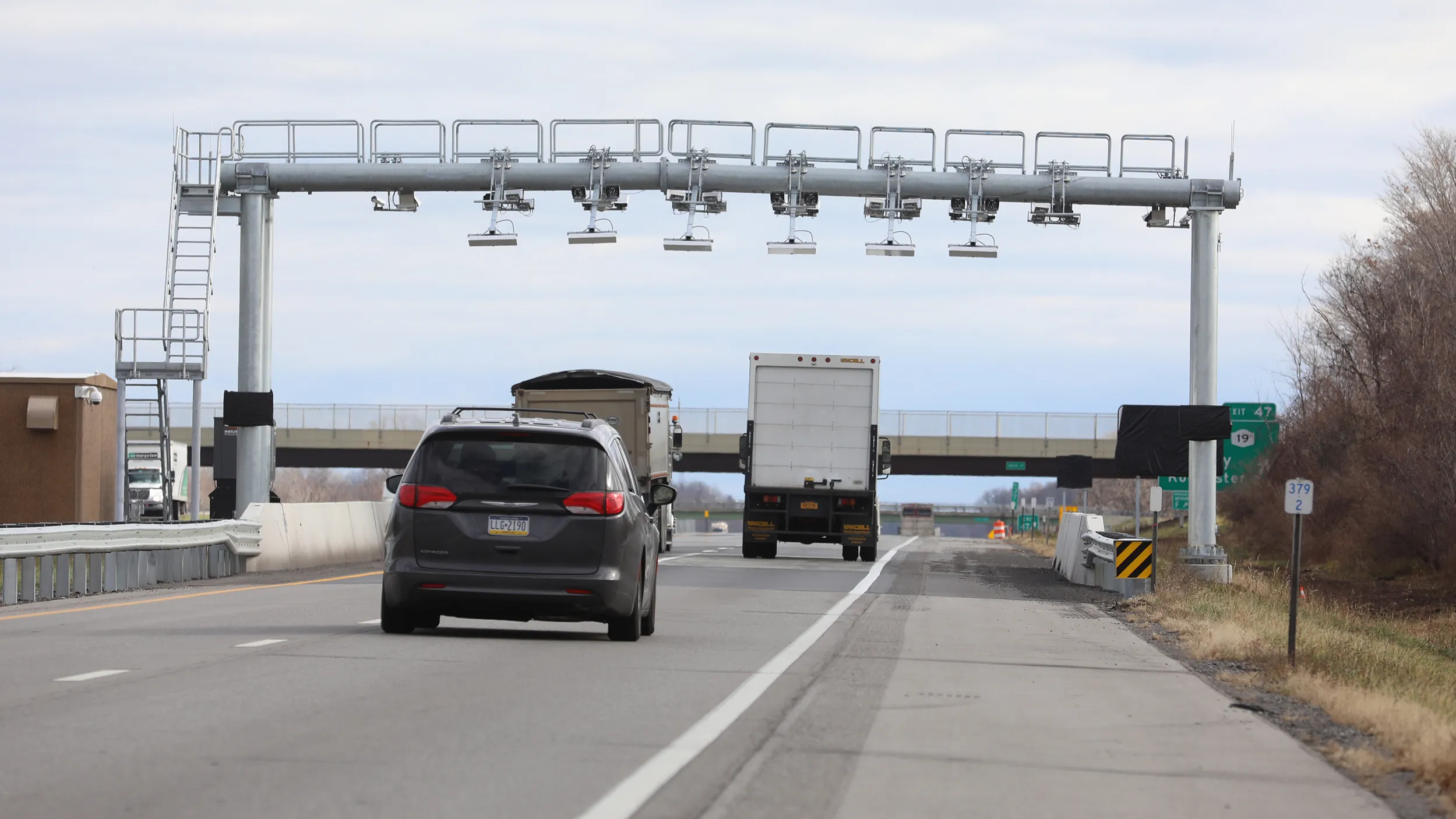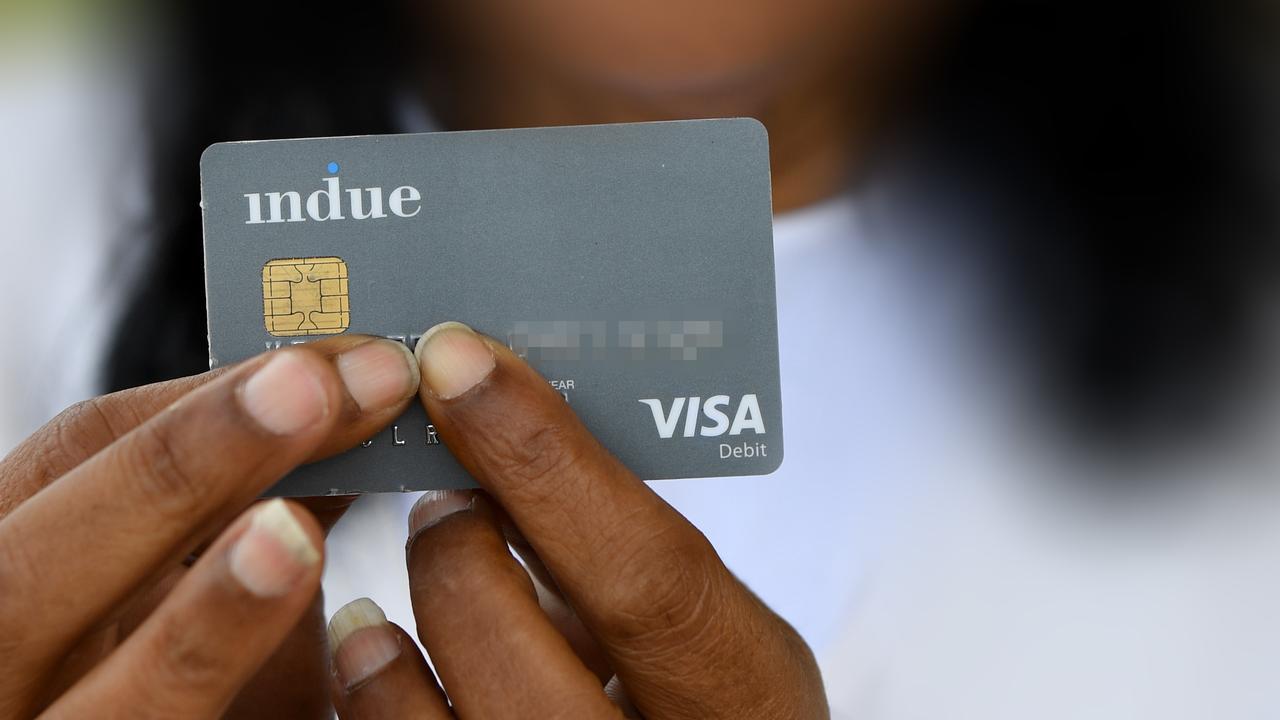Introduction
Technology has revolutionized many aspects of our lives, including the way we handle our finances. In recent years, the concept of going cashless has gained significant prominence. Going cashless refers to the shift away from traditional physical currency transactions to digital alternatives. With the growing popularity of digital payment methods such as credit cards, mobile wallets, and online banking, cashless transactions have become increasingly prevalent in our day-to-day lives.
One of the main driving factors behind the adoption of cashless payments is the convenience and efficiency they offer. Instead of fumbling for cash or coins, individuals can simply swipe a card or tap their smartphones to complete a transaction. This speed and ease of use make cashless payments particularly appealing in a fast-paced society where time is of the essence.
In addition to convenience, the safety and security offered by cashless transactions are paramount. Carrying large amounts of cash can make individuals vulnerable to theft or loss. With cashless payments, the risk of physical theft is significantly reduced. Moreover, credit cards and digital wallets often have built-in security features, such as PIN codes or fingerprint authentication, that add an extra layer of protection.
Furthermore, the rapid digitization of financial transactions has led to higher accountability and transparency. When every transaction is recorded digitally, it becomes easier to track and monitor one’s expenses. This heightened transparency can help individuals gain a better understanding of their spending habits and make more informed financial decisions.
Nevertheless, the transition to a cashless society does come with its challenges. One significant hurdle is the digital divide and accessibility issues. While many people have gained access to smartphones and internet connectivity, there are still segments of the population, particularly in rural areas or lower-income communities, who may not have equal access to digital payment infrastructure. This divide needs to be addressed to ensure that no one is left behind in the shift towards a cashless society.
Definition of Going Cashless
Going cashless refers to the transition from using physical currency, such as coins and banknotes, to digital payment methods for conducting financial transactions. In a cashless society, individuals rely on electronic payment systems and digital financial instruments to purchase goods and services, transfer money, and make payments.
There are various forms of digital payment methods that facilitate cashless transactions. Credit and debit cards are perhaps the most common and widely used forms of cashless payment. These cards, issued by financial institutions, allow users to make purchases by swiping the card or inserting it into a payment terminal. The transaction amount is then deducted from the user’s linked bank account or credit card balance.
Mobile wallets have also gained popularity in recent years. These are smartphone applications that store payment information securely and allow users to make contactless payments using their mobile devices. Mobile wallets typically link to bank accounts or credit cards and offer added convenience as users can easily make payments by scanning a QR code or tapping their smartphones on a payment terminal.
Online banking and internet-based payment platforms enable individuals to conduct cashless transactions remotely. Users can transfer funds, pay bills, and make online purchases using their computers or mobile devices. These platforms offer convenience and flexibility, as users can access and manage their finances from anywhere with an internet connection.
The rise of cryptocurrency, such as Bitcoin, has also contributed to the concept of going cashless. Cryptocurrencies are digital or virtual currencies that use cryptography for security and operate independently of central banks. While still not as widely accepted as traditional forms of payment, cryptocurrencies have gained traction as an alternative cashless payment method for tech-savvy individuals and businesses.
Advantages of Going Cashless
Going cashless offers numerous advantages that have contributed to its increasing adoption globally. Here are some key benefits:
- Convenience and Efficiency: Cashless transactions provide a quick and hassle-free way to make payments. With just a swipe, tap, or scan, transactions can be completed within seconds. This eliminates the need to carry physical cash or wait for change, making the payment process more efficient and convenient for both consumers and businesses.
- Improved Safety and Security: Carrying large sums of cash can make individuals more susceptible to theft or loss. On the other hand, cashless transactions offer enhanced security features, such as encryption and authentication methods, that safeguard sensitive payment information. Furthermore, digital records provide a trail of transactions, improving accountability and reducing the risk of financial fraud.
- Higher Accountability and Transparency: Cashless transactions leave a digital trail, making it easier for individuals to track and monitor their expenses. Online banking apps and payment platforms often provide detailed transaction history, enabling users to gain insights into their spending patterns and make more informed financial decisions.
- Reduced Risk of Loss or Theft: Losing a physical wallet or having cash stolen can be financially devastating. With cashless payments, the risk of losing money is minimized as transactions are conducted through secure digital channels. In the event of a lost or stolen card, users can quickly block or freeze their accounts to prevent unauthorized transactions.
- Environmental Benefits: Going cashless also contributes to sustainable practices. By reducing the use of physical currency, the demand for paper and metal resources decreases, leading to lower carbon emissions associated with production and transportation.
Overall, the advantages of going cashless outweigh the limitations, making it an enticing proposition for individuals and businesses alike. The convenience, safety, accountability, and environmental benefits make cashless transactions an appealing choice in today’s digital age.
Convenience and Efficiency
One of the primary advantages of going cashless is the convenience and efficiency it brings to financial transactions. Traditional methods of payment, such as cash or checks, require physical handling and can be time-consuming. In contrast, cashless transactions streamline the payment process and offer a more seamless experience for both consumers and businesses.
With cashless payments, individuals no longer need to carry bulky wallets or worry about having exact change. Instead, they can simply use a credit or debit card, a mobile wallet, or other digital payment methods to make purchases. A quick swipe of the card or a tap of the smartphone is all it takes to complete the transaction. This speed and ease of use are particularly valuable in today’s fast-paced society where time is of the essence.
Furthermore, cashless transactions offer enhanced convenience for online shopping. With a few clicks, consumers can make purchases from the comfort of their homes and have their items delivered directly to their doorsteps. This eliminates the need to physically visit brick-and-mortar stores, stand in lines, or carry heavy shopping bags.
In addition to convenience, cashless transactions also provide greater efficiency for businesses. With electronic payment systems, businesses can process transactions quickly and accurately, reducing the potential for human errors in calculating change or handling cash. This efficiency allows businesses to serve more customers in less time, ultimately boosting productivity and revenue.
Moreover, cashless payments facilitate seamless integration with other digital tools and systems. Many businesses can easily integrate point-of-sale systems with inventory management, accounting software, and customer relationship management platforms. This integration helps streamline operations, improve inventory management, and generate real-time sales reports.
Lastly, cashless transactions enable effortless tracking and organization of financial data. Digital payments leave a digital paper trail, making it easier for individuals and businesses to keep records of their transactions. This eliminates the need for manual record-keeping, reduces the risk of lost receipts, and simplifies the process of evaluating expenses for budgeting purposes or tax filing.
In summary, the convenience and efficiency provided by cashless transactions make them a preferred choice for consumers and businesses alike. The ease of use, speed, and integration with digital systems contribute to a more streamlined and efficient financial ecosystem.
Improved Safety and Security
One of the significant advantages of going cashless is the improved safety and security that it offers compared to traditional cash transactions. Cashless payment methods utilize advanced technology and security features to protect sensitive financial information and minimize the risk of fraud or theft.
First and foremost, carrying large amounts of cash can make individuals more vulnerable to theft or loss. With cashless transactions, the need to carry physical cash is eliminated, reducing the chances of becoming a target for theft. Instead, individuals can use digital payment methods such as credit or debit cards, mobile wallets, or online banking to make purchases or transfer funds.
Credit and debit cards, for example, come equipped with sophisticated security features such as embedded chips and personal identification numbers (PINs). These features ensure that the card can only be used by its authorized owner, providing an extra layer of protection against unauthorized use. Additionally, some cards offer additional security measures like two-factor authentication or biometric verification, such as fingerprint or facial recognition.
Mobile wallet applications also prioritize security by utilizing encryption technology to protect payment information. These apps often require user authentication, such as a PIN or fingerprint, before completing a transaction. Furthermore, transaction details are securely stored and transmitted, reducing the risk of interception or unauthorized access.
Another advantage of cashless transactions is the ability to easily track and monitor financial activity. Each transaction made through digital payment methods leaves a digital footprint, providing individuals with a detailed record of their financial interactions. This allows for better accountability and fraud detection, as any suspicious or unauthorized transactions can be identified and reported promptly.
Moreover, in the case of a lost or stolen card, individuals can quickly contact their financial institution to report the incident and have their card deactivated or frozen. This immediate response helps mitigate the risk of unauthorized transactions and limits any potential financial losses. Most financial institutions and payment providers also have fraud protection policies in place to protect customers from any liability resulting from fraudulent transactions.
Lastly, the digital nature of cashless transactions enhances overall financial transparency and accountability. Digital records enable individuals and businesses to easily track and reconcile transactions, helping to detect any discrepancies or errors. This level of transparency can also act as a deterrent for illegal activities, as it becomes more difficult to engage in illicit financial transactions without leaving a digital trail.
In summary, the improved safety and security provided by cashless transactions offer individuals peace of mind and reduce the risk of financial loss or fraud. Advanced security features, encryption technology, and digital record-keeping contribute to a more secure financial ecosystem.
Higher Accountability and Transparency
Going cashless brings about a higher level of accountability and transparency in financial transactions. Digital payment methods leave a clear digital trail, allowing individuals and businesses to easily track and monitor their financial activities.
One of the key advantages of cashless transactions is the ability to keep detailed, accurate records of every transaction. Through online banking apps, payment platforms, or credit card statements, individuals can access and review their transaction history. This record-keeping provides a comprehensive overview of their expenses, making it easier to analyze spending patterns, identify areas for improvement, and establish effective budgeting strategies.
Furthermore, the transparency of cashless transactions helps in financial planning and auditing processes. Businesses can generate real-time reports that provide insights into cash flow, sales patterns, and inventory management. This information enables effective decision-making, facilitates financial forecasting, and simplifies tax compliance.
The digital nature of cashless payments also contributes to greater accountability and reduces the potential for financial discrepancies or fraud. With digital records, it becomes more challenging for individuals or businesses to manipulate or hide financial transactions. This increased level of transparency acts as a deterrent for dishonest practices and promotes a culture of financial integrity.
In addition to personal accountability, cashless transactions also promote higher transparency in government and corporate financial operations. Governments and financial institutions often rely on digital payment systems for collecting and distributing funds. This digital infrastructure allows for more accurate tracking of financial transactions, minimizing the risk of corruption and enabling better oversight of public spending.
Moreover, the transparent nature of cashless transactions can foster trust in the financial system. When individuals can easily verify and trace their payments, they have greater confidence in the security and reliability of digital payment methods. This trust leads to increased consumer participation and acceptance of cashless transactions, further driving the transition to a more transparent financial ecosystem.
However, it is crucial to address privacy concerns regarding the collection and storage of transaction data. Striking the right balance between transparency and privacy is essential to ensure that individuals’ financial information remains secure while still enjoying the benefits of accountability and transparency.
In summary, going cashless promotes higher accountability and transparency in financial transactions. Digital records, real-time reporting, and the ability to track and monitor expenses contribute to a more accountable financial ecosystem for individuals, businesses, and even governments.
Reduced Risk of Loss or Theft
One of the significant advantages of going cashless is the reduced risk of loss or theft compared to carrying physical currency. Cashless transactions provide a safer and more secure way to conduct financial transactions, minimizing the potential for financial loss.
Carrying large amounts of cash can make individuals vulnerable to theft or loss. Physical currency can be lost, stolen, or misplaced easily. However, with cashless payments, the need to carry cash is eliminated. Instead, individuals can use digital payment methods such as credit or debit cards, mobile wallets, or online banking to make purchases or transfer funds. This greatly reduces the risk of physical theft or loss.
In the event of a lost or stolen card, individuals can quickly report the incident to their financial institution and have their card deactivated or frozen. This immediate action helps mitigate the risk of unauthorized transactions and limits any potential financial losses. Most financial institutions and payment providers have fraud protection policies in place to safeguard customers from any liability resulting from fraudulent transactions.
Moreover, cashless transactions offer additional layers of security through various authentication methods. Credit and debit cards often utilize personal identification numbers (PINs) or chip-and-PIN technology, making it difficult for unauthorized individuals to use the card. Mobile wallet applications also employ encryption technology and user authentication, such as PINs or biometrics (e.g., fingerprint or facial recognition), to ensure the security of payment information.
Additionally, digital payment methods provide users with the ability to monitor and track transactions in real-time. Users receive notifications or alerts for every transaction made, allowing them to quickly identify any suspicious activity. This enables individuals to take immediate action, such as contacting their bank or payment provider, to prevent further unauthorized transactions.
Furthermore, unlike physical cash, digital transactions leave a digital trail that can be easily traced. Each transaction made through cashless payment methods is recorded and can be accessed in the transaction history. This provides individuals with a record of their financial activity, making it easier to identify any discrepancies or unauthorized transactions.
In summary, going cashless reduces the risk of loss or theft associated with physical currency. Cashless transactions offer enhanced security measures, easy reporting of lost or stolen cards, authentication methods, transaction monitoring, and the ability to trace and track digital transactions. These factors contribute to a more secure financial ecosystem and provide individuals with peace of mind when conducting their day-to-day financial transactions.
Challenges of Going Cashless
While there are numerous advantages to going cashless, there are also certain challenges that come with the transition from traditional cash transactions to digital payment methods. These challenges need to be addressed to ensure inclusivity and accessibility for all individuals and communities.
- Digital Divide and Accessibility Issues: Not everyone has equal access to digital payment infrastructure. There are individuals, particularly in rural areas or lower-income communities, who may not have access to smartphones, internet connectivity, or banking services. This digital divide needs to be bridged to ensure that everyone can participate in the cashless economy.
- Privacy Concerns: Cashless transactions involve sharing personal and financial information with various entities, such as banks, payment processors, and merchants. This raises concerns about data privacy and security. It is crucial to establish robust privacy regulations and ensure that user data is protected during transactions.
- Dependency on Technology: Cashless transactions rely heavily on technology infrastructure, such as payment networks, mobile devices, and internet connectivity. Any disruption in these systems can hinder or prevent cashless transactions from taking place, leaving individuals without alternative means to make payments.
- Potential for Increased Spending: The ease and convenience of cashless payments can potentially lead to increased spending. With a simple tap or click, individuals may be more inclined to make impulse purchases or overspend, resulting in financial strain. It is important for individuals to exercise financial discipline and budgeting skills when adopting cashless payments.
- Resistance to Change: Some individuals may be reluctant to embrace cashless transactions due to familiarity with cash and lack of trust in digital systems. Education and awareness programs are necessary to familiarize people with the benefits and security measures associated with cashless payments.
Addressing these challenges requires collaboration between governments, financial institutions, technology providers, and community organizations. Initiatives should be focused on bridging the digital divide, ensuring data privacy and security, investing in robust technology infrastructure, promoting financial literacy, and creating an inclusive and accessible cashless ecosystem for all individuals.
Digital Divide and Accessibility Issues
One of the major challenges associated with the transition to a cashless society is the digital divide and accessibility issues. Not all individuals have equal access to the digital payment infrastructure required to participate in cashless transactions. This creates disparities and challenges in ensuring inclusivity and accessibility for all members of society.
In rural areas and remote locations, internet connectivity may be limited or unavailable, making it difficult for individuals to access digital payment platforms. Moreover, lower-income communities may face barriers to entry, such as the cost of smartphones or computers and access to reliable internet services. This lack of access to digital resources creates a significant divide and can exclude certain populations from participating in the cashless economy.
Additionally, some individuals, particularly the elderly or those with limited technological literacy, may struggle to adapt to the new digital payment methods. They may lack the necessary skills or knowledge to effectively use smartphones, mobile applications, or other digital devices required for cashless transactions. This knowledge gap can further limit their ability to take advantage of the convenience and benefits offered by cashless payments.
Furthermore, while credit and debit cards are widely accepted, there are still merchants, particularly small businesses or vendors in remote areas, that may not have the infrastructure to accept digital payments. This can create challenges for individuals who rely solely on cashless transactions and limit their purchasing options.
To address these issues, efforts must be made to bridge the digital divide and improve digital inclusivity. This includes expanding internet accessibility to underserved areas, providing technological devices at affordable prices, and offering training programs to enhance digital literacy skills. Collaborative initiatives between governments, financial institutions, and technology providers can help ensure that no one is left behind in the transition to a cashless society.
Additionally, promoting alternative methods of cashless payments, such as mobile wallets or digital vouchers, can help overcome the limitations associated with lacking traditional banking services. This allows individuals without bank accounts to still participate in cashless transactions, fostering financial inclusion for all.
Ultimately, addressing the digital divide and accessibility issues is crucial to create a more inclusive and equitable cashless economy. By ensuring that everyone has equal access to digital payments infrastructure and resources, societies can reap the full benefits of a cashless society while minimizing the potential for exclusion based on income, location, or technological literacy.
Privacy Concerns
As society becomes increasingly reliant on cashless transactions, concerns surrounding data privacy and security have emerged. Cashless payments involve the sharing of personal and financial information, raising valid concerns about the privacy and protection of this sensitive data.
One of the primary concerns is the collection and storage of transaction data by financial institutions, payment processors, and merchants. This data includes details such as transaction amounts, merchant names, and dates and times of transactions. While this information is necessary for processing payments and maintaining financial records, there is always a risk of unauthorized access or misuse.
To address privacy concerns, it is essential to establish robust privacy regulations and security measures. Governments and regulatory bodies must enforce strict guidelines to ensure that financial institutions and payment processors handle personal data responsibly, with clear consent from individuals and transparent data protection practices.
Additionally, individuals must take an active role in protecting their own privacy. This includes being cautious about sharing sensitive information, keeping passwords and PINs secure, regularly reviewing transaction histories for any unauthorized activity, and monitoring their credit reports for any signs of fraudulent activity.
Furthermore, advancements in technology, such as biometric authentication methods like fingerprint or facial recognition, raise additional privacy concerns. While these technologies provide convenience and an added layer of security, the storage and potential misuse of biometric data remain areas of concern. Proper encryption and secure storage protocols are necessary to safeguard this sensitive information.
Another aspect to consider is the sharing of transaction data with third-party entities, such as data analytics firms or marketing agencies. With the wealth of transaction data available, there is potential for the compilation and analysis of consumer behavior and spending patterns. While this data can be valuable for businesses and targeted advertising, it must be handled in a responsible and transparent manner and with the individual’s consent.
Education and awareness are also crucial in addressing privacy concerns related to cashless transactions. Individuals need to understand the privacy implications of using digital payment methods and the steps they can take to protect their personal information. Financial institutions and payment processors should play an active role in educating their customers about privacy policies, security features, and available options to manage their data.
In summary, privacy concerns related to cashless transactions are important considerations in today’s digital era. Governments, regulatory bodies, financial institutions, and individuals all play a role in ensuring that privacy is protected and that cashless transactions are conducted in a secure and responsible manner. Striking the right balance between convenience and data privacy is crucial for building trust and fostering long-term acceptance of cashless payment methods.
Dependency on Technology
One of the challenges associated with the shift towards a cashless society is the growing dependence on technology for financial transactions. Cashless payments rely heavily on robust technology infrastructure, including payment networks, mobile devices, and internet connectivity. This dependency creates potential vulnerabilities and challenges that need to be addressed.
One of the main concerns is the reliance on internet connectivity for conducting digital payments. Without a stable and reliable internet connection, individuals may face difficulties in completing cashless transactions. This can be particularly problematic in rural or remote areas where internet infrastructure may be limited or inaccessible. It highlights the necessity for improving connectivity and ensuring equal access to reliable internet services.
Furthermore, cashless transactions require the use of electronic devices such as smartphones, tablets, or card readers. This reliance on devices presents challenges for individuals who may not have access to or be comfortable using such technology. It is crucial to provide education and support to bridge the digital divide and ensure that all individuals can participate in cashless transactions regardless of their technological literacy or access to devices.
The reliance on technology also raises concerns about system vulnerabilities and cybersecurity threats. As cashless transactions increase in popularity, so does the interest of hackers and cybercriminals in exploiting these systems. Financial institutions, payment processors, and individuals must take necessary precautions to protect against data breaches, identity theft, and fraudulent activities.
Another consideration is the potential impact of technological disruptions or system failures. Instances of power outages, network outages, or hardware malfunctions can temporarily disrupt cashless transactions, leaving individuals without alternative means to make payments. Backup systems and contingency plans should be in place to mitigate such risks and ensure the availability of alternative payment methods in case of technological disruptions.
To address these challenges, investment in robust and reliable technology infrastructure is crucial. Governments, financial institutions, and technology providers should work together to improve internet connectivity, promote digital literacy, and ensure the availability of secure and resilient payment systems.
Moreover, continuous monitoring and improvement of cybersecurity measures are necessary to protect cashless payment systems from potential threats. This includes regular system updates, encryption protocols, and educating individuals about cybersecurity best practices to reduce the risk of falling victim to cyber threats.
Overall, while dependence on technology is a challenge in transitioning to a cashless society, proper investments, education, and security measures can help mitigate these risks. Striving for a balance between embracing the benefits of technology and preparing for potential disruptions is essential to ensure the smooth functioning and acceptance of cashless payment methods.
Potential for Increased Spending
As the transition to a cashless society accelerates, one of the challenges individuals may face is the potential for increased spending. The convenience and ease of cashless transactions can lead to impulsive buying behavior and a tendency to overspend.
Cashless payments, such as credit cards or mobile wallets, eliminate the physical exchange of money, creating a less tangible connection between the purchase and the actual money being spent. Unlike physical cash transactions where one can physically see and feel the money leaving their hands, cashless transactions can create a psychological distance from the monetary value being exchanged.
Moreover, with cashless payments, individuals may be less likely to keep track of their expenses in real-time. Physical cash naturally imposes a limit on spending as individuals can only spend what they have on hand. In contrast, cashless transactions allow individuals to spend beyond their immediate means, relying on credit or overdraft facilities.
In addition, the ease and speed of cashless transactions can lead to impulsive buying behavior. With just a few clicks or taps, individuals can make purchases on e-commerce platforms or in-store without physically handling cash. This convenience can lead to spontaneous and unplanned purchases, contributing to increased spending.
Furthermore, cashless transactions may also encourage individuals to make purchases on credit rather than considering their budget or immediate financial capabilities to make the payment. This can lead to accumulated debt and potential challenges in managing personal finances.
To mitigate the potential for increased spending, individuals need to exercise financial discipline and develop effective budgeting strategies. It is essential to set spending limits and regularly review and analyze expenses to ensure they align with personal financial goals and priorities.
Financial institutions and technology providers can also play a role in promoting responsible spending habits. This can be achieved through customizable spending alerts, real-time transaction notifications, or budgeting tools integrated into banking apps or payment platforms. These features can help individuals monitor their spending, set financial goals, and make informed purchasing decisions.
Education and financial literacy are also crucial in addressing the potential for increased spending. Individuals should be empowered with the knowledge and understanding of the implications of cashless transactions on personal finances. Implementing educational programs and resources can encourage responsible financial behavior and equip individuals with the necessary skills to manage their money effectively.
Ultimately, while cashless transactions offer convenience and efficiency, individuals must be mindful of the potential for increased spending. Employing financial discipline, setting spending limits, and seeking financial education can help individuals navigate the cashless landscape while maintaining control over their personal finances.
The Transition to a Cashless Society
The world is experiencing a gradual but significant transition towards a cashless society. The increasing adoption of digital payment methods is transforming the way individuals and businesses handle financial transactions. While the shift presents numerous opportunities and benefits, it also poses certain challenges that need to be addressed.
One of the key catalysts driving the transition to a cashless society is technological advancements. The proliferation of smartphones, the expansion of internet connectivity, and the development of secure payment platforms have made digital transactions more accessible and convenient than ever before.
Financial institutions and technology companies are investing heavily in research and development to improve the security, speed, and efficiency of cashless payment systems. This has led to the rise of contactless payment methods, mobile wallets, and blockchain technology, further facilitating the transition to a cashless society.
Another factor driving the transition is consumer demand for convenience. Cashless transactions offer a quick and seamless payment experience, eliminating the need to carry physical cash or handle loose change. The ability to make purchases with just a swipe, a tap, or a few clicks has reshaped consumer behavior and expectations.
Businesses are also embracing the benefits of cashless transactions. Cashless payments streamline operations, reduce the risk of theft and human error in handling cash, and enhance efficiency in financial accounting. Furthermore, the availability of transaction data allows businesses to gain valuable insights into consumer behavior and tailor their offerings accordingly.
However, despite the benefits, it is crucial to address the challenges that arise during this transition. One of the primary challenges is bridging the digital divide and ensuring equal access to digital payment infrastructure. Efforts must be made to improve internet connectivity, enhance digital literacy, and provide affordable access to smartphones or other necessary devices.
Privacy and security concerns are also significant considerations. It is essential to establish comprehensive regulations and security measures to protect personal and financial data, ensuring that individuals’ privacy rights are respected throughout the cashless transaction process.
Moreover, education and awareness play a critical role in fostering the successful transition to a cashless society. Governments, financial institutions, and technology providers should collaborate to educate individuals about the benefits, risks, and responsible use of cashless payment methods. This includes promoting financial literacy programs, cybersecurity training, and providing resources that empower individuals to make informed financial decisions.
The transition to a cashless society is a continuous process that requires ongoing collaboration and adaptation. Governments, financial institutions, businesses, and individuals must work together to create an inclusive, accessible, and secure cashless ecosystem. By addressing challenges and harnessing the benefits, societies can embrace the digital transformation and reap the rewards of a more efficient and dynamic financial landscape.
The Role of Financial Institutions
In the transition to a cashless society, financial institutions play a crucial role in facilitating and shaping the adoption of digital payment methods. As trusted intermediaries between individuals, businesses, and the broader financial ecosystem, financial institutions have several responsibilities and opportunities to drive the shift towards cashless transactions.
One of the primary responsibilities of financial institutions is to provide the necessary infrastructure and platforms for secure and reliable digital transactions. This includes developing and maintaining robust payment networks, ensuring the compatibility of their systems with emerging digital payment technologies, and offering user-friendly interfaces for individuals and businesses to conduct cashless transactions.
Financial institutions also have the responsibility to educate their customers about the benefits and risks associated with cashless payments. This includes providing clear information about different digital payment options, security measures, and data privacy practices. By fostering transparent communication, financial institutions can build trust and alleviate concerns related to the security and privacy of cashless transactions.
Moreover, financial institutions play a crucial role in ensuring that all individuals have equal access to digital payment infrastructure. This involves collaborating with governments, regulators, and technology providers to bridge the digital divide. Financial institutions can offer accessible solutions like mobile banking applications, simplified account opening processes, and tailored financial products to meet the needs of diverse customer segments and promote financial inclusivity.
Financial institutions also have an opportunity to leverage customer data obtained through cashless transactions to develop customized financial services. By analyzing transaction data, financial institutions can gain insights into consumer behavior, spending patterns, and financial needs. This data-driven approach allows them to offer personalized recommendations, targeted offers, and improved financial solutions to their customers.
Additionally, financial institutions have a critical role in promoting financial literacy and digital literacy. They can actively engage with customers and the wider community through educational campaigns, workshops, and resources to enhance financial literacy skills and educate individuals on the responsible use of cashless payment methods.
Another responsibility of financial institutions is to collaborate with merchants and businesses to encourage the acceptance of digital payments. This involves working with vendors to optimize payment infrastructure and offer incentives for embracing cashless transactions. By expanding the acceptance network, financial institutions help create a seamless cashless experience for individuals and further drive the adoption of digital payment methods.
Lastly, financial institutions must continuously monitor and invest in cybersecurity measures to protect customer data and financial transactions. This involves implementing rigorous security protocols, updating systems regularly, and educating customers about best practices for keeping their accounts and personal information secure.
In summary, financial institutions play a vital role in the transition to a cashless society. They have responsibilities in providing infrastructure, educating customers, fostering inclusivity, leveraging data for personalized services, promoting financial literacy, and ensuring the security of cashless transactions. By actively embracing their role, financial institutions can help drive the adoption of digital payment methods and contribute to the transformation of the financial landscape.
Government Initiatives and Regulations
Government initiatives and regulations play a significant role in shaping the transition to a cashless society. As cashless transactions become more prevalent, governments worldwide are taking steps to foster the growth of digital payment methods, create a supportive regulatory environment, and address the challenges and concerns associated with the shift.
One key initiative is the development of digital payment infrastructure. Governments are investing in upgrading connectivity and expanding internet access to ensure that individuals and businesses, particularly in rural or underserved areas, have reliable access to the internet for conducting cashless transactions. These initiatives help bridge the digital divide, promoting financial inclusion for all segments of society.
Regulatory frameworks are also being established to govern the operations of financial institutions, payment processors, and technology providers involved in cashless transactions. These regulations ensure that entities comply with standards for data protection, privacy, anti-money laundering, and consumer protection. They aim to establish a secure and trustworthy environment for individuals to engage in financial transactions.
Furthermore, governments are working on initiatives to promote financial literacy and educate individuals about the benefits, risks, and responsible use of digital payment methods. Financial education campaigns, workshops, and resources are being developed to empower individuals, particularly marginalized communities, with the knowledge and skills to navigate the cashless economy effectively.
Government initiatives also focus on fostering the acceptance and adoption of cashless payments. They encourage merchants, businesses, and service providers to accept digital payments by implementing tax incentives, reduced fees, or streamlined regulations. By creating incentives for businesses to adopt cashless transactions, governments aim to create a seamless and interconnected cashless ecosystem.
Additionally, governments are exploring options for regulating emerging technologies such as cryptocurrencies and blockchain. While these technologies offer potential benefits, they also present unique challenges in terms of security, fraud, and financial stability. Regulatory oversight is essential to strike the right balance between innovation and consumer protection.
International collaboration is also becoming increasingly important as cashless transactions transcend geographical boundaries. Cooperation among governments helps establish consistent standards and interoperability, enabling seamless cross-border transactions and enhancing consumer confidence in using cashless payment methods globally.
Lastly, governments are working towards establishing a robust system for monitoring and addressing cybersecurity threats. As cashless transactions rely on technology infrastructure, governments must stay vigilant in identifying and mitigating potential risks. Collaboration with industry experts, financial institutions, and technology providers is essential to develop cybersecurity standards, incident response protocols, and awareness programs.
In summary, government initiatives and regulations are essential in facilitating the transition to a cashless society. Investments in infrastructure, the establishment of regulatory frameworks, financial education campaigns, support for business adoption, international collaboration, and cybersecurity measures all contribute to creating a secure, inclusive, and well-regulated cashless ecosystem.
Consumer Adoption and Education
Consumer adoption and education are crucial components of the successful transition to a cashless society. As digital payment methods become more prevalent, it is essential to ensure that individuals are equipped with the knowledge and skills to effectively and responsibly participate in the cashless economy.
One important aspect is consumer education about the benefits and functionality of cashless transactions. Many individuals may be unfamiliar with the various digital payment options available and may have concerns about security, privacy, or ease of use. Education campaigns, workshops, and online resources can help individuals understand the advantages of cashless payments, such as convenience, security, and enhanced financial management.
Financial literacy programs are also instrumental in promoting consumer adoption of cashless payments. Many individuals may need guidance on how to create and manage digital wallets, use mobile banking applications, or navigate online purchasing platforms. Providing accessible and comprehensive financial education empowers individuals to make informed decisions and take full advantage of the benefits offered by cashless transactions.
Inclusivity is a vital consideration in consumer adoption and education. Efforts should be made to ensure that vulnerable populations, such as the elderly, individuals with disabilities, or those with limited access to technology or financial services, are not left behind. Tailored educational materials and support programs can help bridge the digital divide and ensure that everyone can fully participate in the cashless economy.
Financial institutions and technology companies also have a role in educating consumers. They can proactively communicate the security measures in place, such as encryption, multi-factor authentication, and fraud detection, to build trust and alleviate concerns. Clear and transparent communication about the data protection and privacy policies surrounding cashless transactions is essential for instilling confidence in consumers.
Moreover, consumer feedback and input should be actively sought and incorporated into the development and improvement of cashless payment systems. By involving consumers in the design and decision-making processes, their needs, preferences, and concerns can be addressed, ensuring that the technology and services are user-friendly and meet the expectations of the target audience.
Addressing concerns related to the digital divide is also vital for consumer adoption. Efforts should focus on improving internet connectivity, investing in digital infrastructure in underserved areas, and providing affordable access to smartphones or other digital devices. A multi-stakeholder approach involving governments, financial institutions, technology providers, and community organizations is necessary to bridge the digital gap.
In summary, consumer adoption and education are pivotal in the transition to a cashless society. By promoting awareness, providing accessible financial literacy programs, ensuring inclusivity, engaging with consumers, and addressing concerns, individuals can confidently embrace cashless transactions and leverage the benefits of a digital payment ecosystem.
Conclusion
The transition to a cashless society is well underway, driven by advancements in technology and the desire for convenience and efficiency in financial transactions. Going cashless offers numerous advantages, including convenience, improved safety and security, higher accountability and transparency, and reduced risk of loss or theft.
However, the shift towards a cashless society also presents challenges that need to be addressed. The digital divide and accessibility issues must be tackled to ensure that no one is left behind in the adoption of digital payment methods. Privacy concerns and the protection of personal data require robust regulations and security measures.
Dependency on technology calls for investments in infrastructure, cybersecurity, and contingency plans to ensure the reliability of cashless transactions. The potential for increased spending necessitates financial discipline and responsible budgeting from individuals. Education and awareness programs are crucial to familiarize consumers with the benefits, risks, and responsible use of cashless payments.
The role of financial institutions, governments, businesses, and technology providers is vital in shaping the transition to a cashless society. Financial institutions play a significant role in providing secure and accessible payment infrastructure, educating consumers, fostering inclusivity, leveraging customer data for personalized services, and ensuring cybersecurity.
Government initiatives and regulations are essential in promoting financial inclusion, developing digital payment infrastructure, educating consumers, fostering business adoption, and ensuring cybersecurity and data protection. Collaboration among stakeholders is crucial to creating an inclusive, secure, and well-regulated cashless ecosystem.
Ultimately, achieving a successful transition to a cashless society requires a balance between embracing the benefits of digital payments and addressing the challenges associated with the shift. By addressing concerns related to accessibility, privacy, security, and financial literacy, societies can fully realize the potential of cashless transactions, fostering a more efficient, transparent, and inclusive financial landscape.









